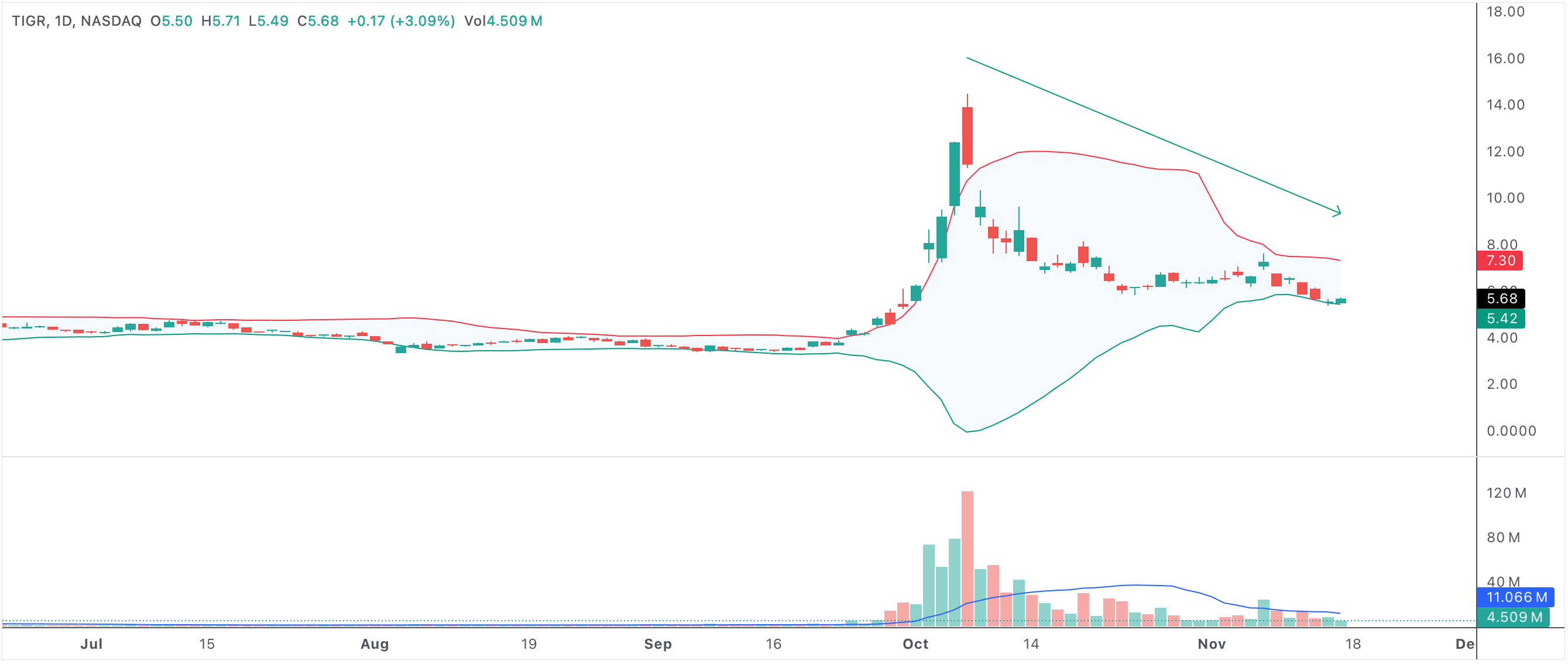Stocks that have experienced large volatility - signals, causes, and effects
Large volatility in the stock market is often a clear sign that investor sentiment is shifting and uncertainty is taking hold. Stocks that have experienced large volatility can react rapidly to news, earnings reports, economic data, or even market rumors. Understanding why volatility surges, and how it shapes future price action, is critical for traders and long-term investors alike.

volatilityexpansion
An example of a stock that has experienced large volatility
Stocks that have experienced large volatility
What Causes Volatility in Stocks?
Volatility is generally triggered by significant news events, changes in economic fundamentals, or unexpected developments at the company or industry level. Earnings surprises, changes in interest rates, geopolitical developments, and broader economic uncertainty can all lead to rapid and often unpredictable swings in stock prices. Sometimes, increased volatility is a result of technical factors, such as a break of support or resistance, or high-frequency trading amplifying moves in either direction.
Market Psychology and Investor Sentiment
When stocks become volatile, it often reflects the collective anxiety or excitement of market participants. High volatility is frequently associated with bearish sentiment because it can indicate fear, panic selling, or a rush to exit riskier positions. At other times, however, it may result from speculative enthusiasm, especially in hot sectors or during bull market phases. The key is that volatility reflects uncertainty—whether about the company’s future, the market’s direction, or global economic conditions.
Volatility as a Bearish Indicator
While not all volatility is negative, a sudden expansion in volatility—especially to the downside—is often viewed as a warning sign. If multiple stocks in a sector or the broader market start showing large daily price swings, it suggests instability and a lack of confidence. This can trigger additional selling as stop-loss orders are hit, margin calls force liquidation, and risk-averse investors seek safety in cash or defensive assets. In such an environment, bearish trends can accelerate rapidly.
Impact on Trading and Risk Management
Managing risk becomes much more challenging when volatility is high. Traders may widen their stop-loss orders to avoid being “whipsawed” by sudden moves, or they may reduce their position size. For long-term investors, periods of large volatility can present opportunities to buy fundamentally strong stocks at discounted prices, but they can also test patience and resolve. The key is to have a strategy for both entering and exiting volatile positions and to be aware of the increased risk.
- Volatility expansion can indicate a shift from bullish to bearish sentiment.
- Forced selling during volatile periods can exaggerate price declines.
- Wide daily ranges can shake out weak hands and attract speculative traders.
- High volatility often precedes major market reversals or corrections.
- Periods of instability frequently lead to new risk management strategies.
Long-Term Effects of Large Volatility
Sustained periods of high volatility can change the way investors perceive risk in certain stocks or entire sectors. Stocks that repeatedly experience large swings may see decreased institutional ownership or face higher costs of capital. On the other hand, once volatility subsides and stability returns, these stocks can also become attractive targets for value investors or traders looking for a rebound.
How to Spot Opportunities in Volatile Markets
Volatility isn’t always a negative for everyone. Experienced traders look for volatility expansion as an opportunity for quick profits, using tools like the Average True Range (ATR), Bollinger Bands, and volume analysis to time entries and exits. However, it’s important to be aware of the risks: fast-moving markets can lead to larger-than-expected losses as well as gains.
Summary: Volatility as a Double-Edged Sword
Stocks that have experienced large volatility provide both warning signs and opportunities. For some, increased volatility signals the need to reduce risk, while for others, it opens the door to potential gains. The crucial point is to understand why volatility has increased and to use sound risk management and trading strategies to navigate unstable market conditions.